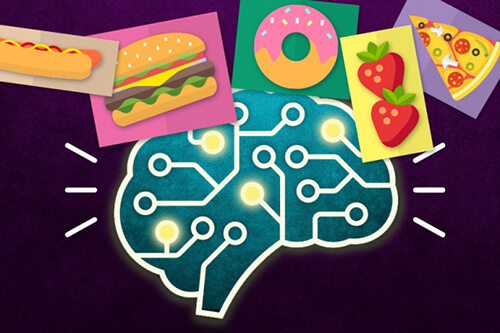


As of Beijing time The data is from a third-party organization and is only for reference.
For actual information, please refer to:www.eastmoney.com
Address: 20 Maguire Road, Suite 103, Lexington, MA 02421(America)
Tel: +1(626)986-9880
Address: Allia Future Business Centre Kings Hedges Road Cambridge CB4 2HY, UK
Tel: 0044 7790 816 954
Email: marketing@medicilon.com
Address: No.585 Chuanda Road, Pudong New Area, Shanghai (Headquarters)
Postcode: 201299
Tel: +86 (21) 5859-1500 (main line)
Fax: +86 (21) 5859-6369
© 2023 Shanghai Medicilon Inc. All rights reserved Shanghai ICP No.10216606-3
Shanghai Public Network Security File No. 31011502018888 | Website Map


Business Inquiry
Global:
Email:marketing@medicilon.com
+1(626)986-9880(U.S.)
0044 7790 816 954 (Europe)
China:
Email: marketing@medicilon.com.cn
Tel: +86 (21) 5859-1500



Neurons do not act alone in regulating appetite. They have help from glial cells, structural support elements that have, in recent years, been implicated in important brain functions. Now that they are known to enhance appetite when activated, and to suppress it when deactivated, glial cells in the brain—more specifically, astrocytes in the hypothalamus—may point to new targets for drugs against obesity and other appetite-related disorders.

Astrocytes and other glial cells make up about half of the cells in the brain, and they have been known to play many supporting roles, including cushioning neurons and helping them form connections with one another. Glial cells are also increasingly being recognized for their abilities to modulate brain functions, as well as for their roles in neurodegenerative disorders. Yet glial cells remain difficult to study because scientists haven’t developed many techniques for silencing or stimulating these cells, as they have for neurons.
One of the techniques available for the study of glial cells is a chemogenetic approach involving DREADDs, or designer receptors exclusively activated by designer drugs. An implementation of this chemogenetic approach has been demonstrated by scientists at the University of North Carolina, and now it has been taken up by scientists based at MIT. The MIT scientists, led by Guoping Feng, decided to use DREADDs to investigate the relationship between glial cell activity and appetite.
Using this strategy, the MIT researchers were able to engineer specific cells to produce a surface receptor that binds to a chemical compound known as CNO, a derivative of clozapine. Then, when CNO is given, it activates the glial cells. Using this approach, the MIT team found that turning on astrocyte activity with just a single dose of CNO had a significant effect on feeding behavior in mice.
Additional details appeared October 18 in the journal eLife, in an article entitled, “Direct modulation of GFAP-expressing glia in the arcuate nucleus bi-directionally regulates feeding.” The article describes how the MIT team followed up on observations that two groups of neurons in the hypothalamus regulate appetite. These neurons are known as agouti-related protein/neuropeptide Y (AgRP/NPY)-expressing neurons and pro-opiomelanocortin (POMC)-expressing neurons.
“Selective Ca2+ activation of glia in the mouse arcuate nucleus (ARC) reversibly induces increased food intake while disruption of Ca2+ signaling pathway in ARC glia reduces food intake,” wrote the authors of the eLife article. “The specific activation of ARC glia enhances the activity of AgRP/NPY-expressing neurons but induces no net response in POMC-expressing neurons.”
“ARC glial activation non-specifically depolarizes both AgRP/NPY and POMC neurons but a strong inhibitory input to POMC neurons balances the excitation,” the authors continued. “When AgRP/NPY neurons are inactivated, ARC glial activation fails to evoke any significant changes in food intake.”
The researchers also found that in the short term (three days), the mice did not gain extra weight, even though they were eating more.
“This raises the possibility that glial cells may also be modulating neurons that control energy expenditures, to compensate for the increased food intake,” said Naiyan Chen, a postdoc at the Singapore Bioimaging Consortium and MIT’s McGovern Institute and the eLife article’s lead author. “They might have multiple neuronal partners and modulate multiple energy homeostasis functions all at the same time.”
Still unknown is how the astrocytes exert their effects on neurons. Some recent studies have suggested that glial cells can secrete chemical messengers such as glutamate and ATP; if so, these “gliotransmitters” could influence neuron activity.
Another hypothesis is that instead of secreting chemicals, astrocytes exert their effects by controlling the uptake of neurotransmitters from the space surrounding neurons, thereby affecting neuron activity indirectly.
Feng now plans to develop new research tools that could help scientists learn more about astrocyte-neuron interactions and how astrocytes contribute to modulation of appetite and feeding. He also hopes to learn more about whether there are different types of astrocytes that may contribute differently to feeding behavior, especially abnormal behavior.
“We really know very little about how astrocytes contribute to the modulation of appetite, eating, and metabolism,” notes Chen. “In the future, dissecting out these functional difference will be critical for our understanding of these disorders.”
 Relevant
news
Relevant
news